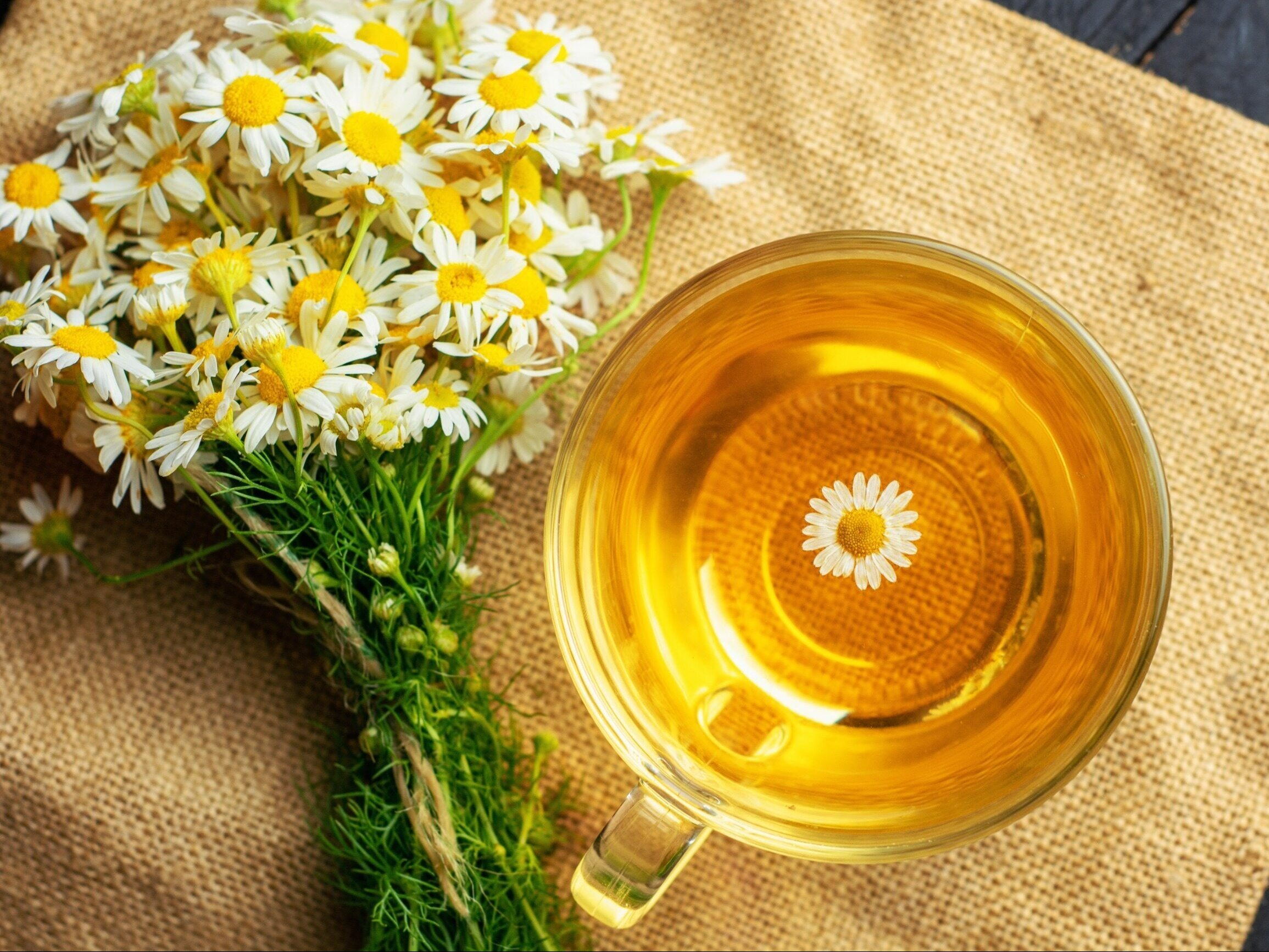Chamomile has a wide range of uses in relieving some diseases. What does this plant help with?

Chamomile is a valuable herbal raw material that has been used in natural medicine for many centuries. Traditionally, chamomile is used in the form of infusions, among others. on the skin and mucous membranes. Chamomile infusion also effectively relieves gastric symptoms and has a gentle calming effect. Learn more about the effects and uses of chamomile flowers.
- Chamomile – what is worth knowing about it?
- Healing properties of chamomile
- What does chamomile help with?
- Chamomile flower infusion – how to prepare it?
- Contraindications to the use of chamomile
Chamomile (chamomile, common chamomile, fragrant chamomile) is a plant belonging to the Asteraceae family, which grows wild in meadows, fields and wastelands and is often sown in home gardens. The herbal raw material consists of chamomile flowers (chamomile baskets), which are collected from May to August and then dried. Chamomile is available in every grocery store and in herbal stores, drugstores and pharmacies. The chamomile herb is famous for its many health-promoting properties. Due to its safety, chamomile tea can be given to infants and small children for, among others: reducing abdominal pain and disinfecting gums during teething. However, it should be remembered that chamomile may cause allergic reactions. Before using chamomile herb, it is worth consulting your doctor.
Chamomile – what is worth knowing about it?
Common chamomile is an aromatic plant that, during the flowering period, produces characteristic flower baskets with white petals and a yellow center. The herbal raw material is chamomile baskets. Essential oil is obtained from chamomile buds, which has numerous medicinal properties. Chamomile oil is an active ingredient often used in the cosmetics industry, which is also used in the pharmaceutical industry, e.g. as an ingredient of ointments, mouthwashes and other medicinal preparations.
Chamomile is a plant that has no special soil requirements, which means it grows easily not only in home gardens, but also in pots and containers. This annual plant is a unique decoration of our surroundings in summer – chamomile flowers are pleasing to the eye and emit a pleasant scent. They can be collected throughout the flowering period and dried, obtaining your own herbal raw material.
Common chamomile is a plant containing valuable biologically active compounds, including:
-
phenolic acids – belong to antioxidants, i.e. compounds that have the ability to prevent the production of reactive oxygen species (they have an antioxidant effect),
-
coumarin and its derivatives – including they have analgesic, anti-swelling, calming, antispasmodic, antiallergic and antioxidant properties,
-
flavonoids – have a strong antioxidant effect and additionally work, among others, anti-cancer, anti-inflammatory, anti-allergic and anti-atherosclerotic,
-
choline – determines the proper functioning of the body, is necessary to maintain the undisturbed functioning of internal organs (especially the liver) and the human nervous system.
Common chamomile also contains vitamins and minerals, including: vitamin C, vitamin A, B vitamins, calcium, zinc, magnesium, iron, copper and fluorine. Thanks to its rich composition, chamomile is a plant with various biological properties.
Healing properties of chamomile
Chamomile has been famous for its beneficial healing properties for centuries. Chamomile has anti-inflammatory, antispasmodic, carminative, antidiabetic, calming and disinfecting properties.
Chamomile soothes irritations of the skin and mucous membranes – it is traditionally used, among others, for rinsing the mouth and throat (it is one of the herbs for sore throat that has an antiseptic effect). Due to its antibacterial effect, it is used in the treatment of, among others: infections caused by the Staphylococcus aureus bacterium. Chamomile also has antidiabetic properties – chamomile infusion prevents excessive increase in blood glucose. Moreover, chamomile facilitates falling asleep and improves the quality of sleep, improves digestion, relieves symptoms associated with hyperacidity of the stomach, helps to get rid of bothersome flatulence and is used for conjunctivitis.
What does chamomile help with?
Chamomile for a wide range of uses. Traditional indications for the use of chamomile include:
-
irritations of the skin and mucous membranes (skin inflammation, abrasions, alleviating the symptoms of sunburn, bacterial infections, candida albicans yeast infection, sore throat, gingivitis, periodontitis);
-
alleviating irritations and symptoms of eye diseases (e.g. drops with chamomile extract relieve conjunctivitis);
-
digestive disorders, indigestion, flatulence, abdominal pain associated with overeating;
-
states of excessive nervous tension;
-
problems with sleeping.
The use of chamomile compresses accelerates the healing of wounds. The use of herbal infusion of chamomile and other herbs, including: oak bark is sometimes recommended for hemorrhoids, anal fissure and inflammation of the vagina and vulva.
The essential oil obtained from chamomile buds also has many health-promoting properties. The strong anti-inflammatory, antibacterial and calming properties of chamomile essential oil make it recommended for baths, massages and inhalations, among others. for colds and sinusitis.
It is worth remembering that essential oils must be diluted with a base oil before applying to the skin.
Chamomile flower infusion – how to prepare it?
Chamomile flower infusion can be prepared from dried chamomile herb or chamomile in infusion sachets. Just pour a glass of boiling water over a teaspoon of chamomile flowers or a sachet of chamomile and leave to infuse covered for about 5-10 minutes.
Chamomile can be used safely by most people. However, do not exceed the recommended daily dose of chamomile infusion, i.e. 2-3 cups of liquid.
If we want to use chamomile for sitz baths, baths or as a skin compress, we need to prepare a decoction of chamomile flowers by pouring 3-4 tablespoons of chamomile herb with about a liter of water, boiling, and then leaving it for about 30 minutes to infuse.
Contraindications to the use of chamomile
Chamomile rarely causes allergic reactions and has no harmful effects on the body. If disturbing symptoms appear after consuming it, e.g. itching, burning, runny nose, you should stop using this herb.
Sources:
-
Mateusz E. Senderski, Almost everything about herbs and herbalism, Wisdom of Nature, 2016
-
Collective work, The Great Herbarium of Medicinal Plants, Jedność Publishing House, 2019
-
Fiodor Mamczur, Jarosław Gładun, Medicinal plants in the garden, National Agricultural and Forest Publishing House, 1988
-
B. Kuźnicka, M. Dziak, Herbs and their use. History and the present – 3rd revised edition, National Medical Publishing House PZWL, Warsaw, 1984





